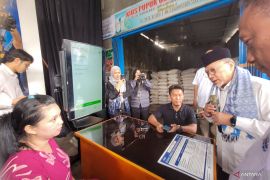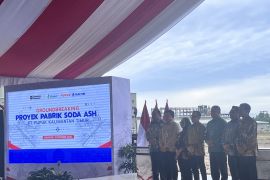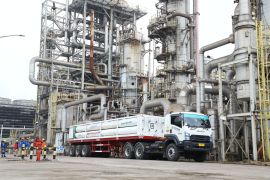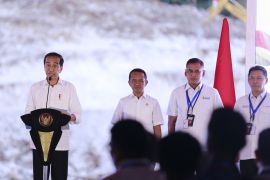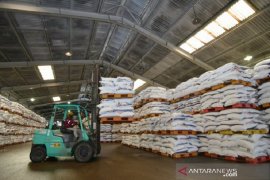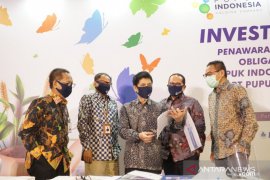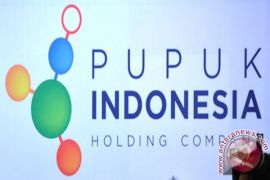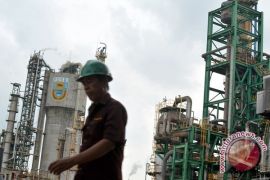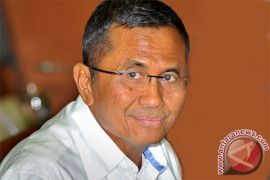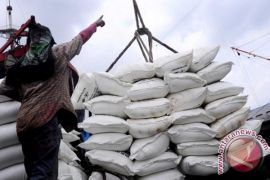Deputy Minister I of SOEs Pahala Mansury said that the use of blue and green ammonia in the world will continue to increase in the future.
Some predictions made by think tanks say that 12 percent of the world's energy ahead of 2050 will use hydrogen as an energy source, Pahala said in his speech as the keynote speaker at the Pupuk Indonesia Clean Ammonia Forum (PICAF) 2023 in Jakarta on Thursday.
"I think this could be the key to Indonesia's economic recovery. PT Pupuk Indonesia can develop blue and green ammonia by working with a number of domestic parties such as Pertamina and also with external parties," he said.
The use of ammonia can support the government's target of achieving net-zero emissions by 2030, he added.
Therefore, in accordance with the recently issued Circular of the Minister of SOEs related to decarbonization, Pahala asked PT Pupuk Indonesia and other SOEs that have a major contribution in reducing national emissions to make a road map for the use of clean energy.
In order to create an ammonia ecosystem, PT Pupuk Indonesia held the Pupuk Indonesia Clean Ammonia Forum (PICAF) 2023.
President Director of PT Pupuk Indonesia Bakir Pasaman said the forum was launched as a form of support to promote a clean (low-carbon) ammonia ecosystem.
According to Pasaman, Pupuk Indonesia is expecting PICAF 2023 to help accelerate the implementation of technological innovation and policy development to strengthen the clean ammonia value chain. This is an extension of Pupuk Indonesia's commitment to supporting the achievement of Indonesia's sustainable development goals.
"Pupuk Indonesia, today, has more than 50 years of experience in the ammonia industry. Therefore, the expertise allows us to see the potential of clean ammonia to support the low-carbon energy transition," he said.
With the development of clean ammonia, Pupuk Indonesia is committed to playing an active role in supporting the achievement of net-zero emissions, which targets to reduce carbon emissions equivalent to five million tons of CO2 by 2050, he said.
Pasaman expressed the hope that the clean ammonia ecosystem development initiative will have a multiplier effect on the Indonesian economy, while supporting Indonesia's commitment to achieving net-zero emissions.
Therefore, he said he is optimistic that PICAF 2023 can provide benefits for all participants and become a momentum to encourage the creation of a clean ammonia ecosystem in Indonesia.
Meanwhile, special adviser to the Ministry of Energy and Mineral Resources (ESDM), Triharyo Soesilo, outlined a number of important points that PT Pupuk Indonesia must keep in mind if it is interested in developing blue and green ammonia.
According to Soesilo, one of the important steps that have not been taken so far is establishing cooperation with subsurface companies that have CO2 reservoir (storage) capacity to successfully develop blue and green ammonia.
"Going back to Pupuk Indonesia's interest in developing blue ammonia and also green ammonia, my advice about the Ministry of Energy and Mineral Resources, number one, if you want to do it, you have to work with companies below the surface," he said.
Not only that, an understanding of the carbon market is needed to recover some of the CCS/CCUS Capex and Opex investment costs in order to improve its economics, he highlighted.
"Secondly, you have to find and develop your own carbon marketing. You are very good at selling your own carbon, urea, ammonia, and buying sulfur and phosphate. However, you have to start developing carbon economics expertise," he added.
Meanwhile, if PT Pupuk Indonesia is keen to produce green ammonia, it will need an understanding of electrolyzer technology, plant site selection with minimum electricity costs, as well as the need to understand market demand and prices for blue and green ammonia.
"Next for green ammonia, you need an understanding of electrolyzer technology, this is very important for green ammonia production, and you need to choose a plant location with minimum electricity costs," he said.
Acting Director General of Chemical, Pharmaceutical, and Textile Industries (IKFT) of the Ministry of Industry Ignatius Warsito earlier revealed that global ammonia demand is predicted to reach 688 million tons by 2050.
"The production cost of renewable ammonia for new plants is expected to drop to US$310–610 per ton by 2050. Currently, the production cost of natural gas and coal-based ammonia is US$110–340 per ton. Carbon capture storage (CCS) will increase the cost by US$100–150 per ton, bringing the fossil-based low-carbon production cost to US$210–490 per ton," Warsito explained.
The projection of ammonia production under the scenario of a limited temperature rise to 1.5 Celsius is that currently most ammonia is produced from natural gas (72 percent) and coal (22 percent), he noted.
The combined capacity of all renewable ammonia projects will be 15Mt in 2030, or 8 percent of the current global ammonia production, he said.
Related news: Gov't looking to expand downstreaming of gas, food: minister
Related news: President Jokowi sets deadline for improving fertilizer distribution
Translator: A Wijaya, Azis Kurmala
Editor: Rahmad Nasution
Copyright © ANTARA 2023


